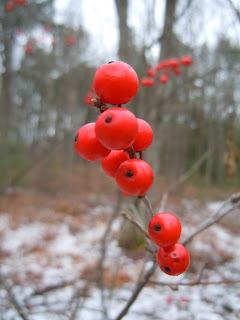What did momentarily satisfy my hunger (I suppose I should say thirst) for the outdoors was brewing up some Sweet Birch tea. I wasn't sure that the year-old dried out pieces of bark would offer up much flavor or nutrition however I was pleasantly surprised with the beautiful and delicious tea that it made.
Birch trees can be tapped and the sap used much like the sap from Maple trees. If you have ever had birch beer (try Boylan's ) you may, in fact, have drank the sap from a birch tree. Yellow, white, and black Birches all produce sugary saps. Interestingly, the prime time to gather birch sap is a month later than maple sugaring season.
This bark contains methyl salicylate (also contained in wintergreen), which is an anti-inflamatory and antiseptic medicine. Methyl salicylate is used in asprin, mouthwashes, arthritis medicines, etc.
The flavor of the tea is really great. It tastes a bit like wintergreen but less sharp and cool. It has a lovely sweet and somewhat licorice like aftertaste which reminds me of sassafras. Wild teas are one of my favorite things to have on hand while I am out in the woods (or to find while I am out in the woods). Not only do they have nutritional bonuses of vitamins, antioxidants and beneficial chemical compounds but they are delicious and comforting which I find encourages me to hydrate myself well at the end of a strenuous day. Add a little sugar and you are replenishing your sugar stores as well.
 |
| Sweet Birch, or Black Birch |
This bark contains methyl salicylate (also contained in wintergreen), which is an anti-inflamatory and antiseptic medicine. Methyl salicylate is used in asprin, mouthwashes, arthritis medicines, etc.
Even the color of Sweet Birch tea is inspiring!











